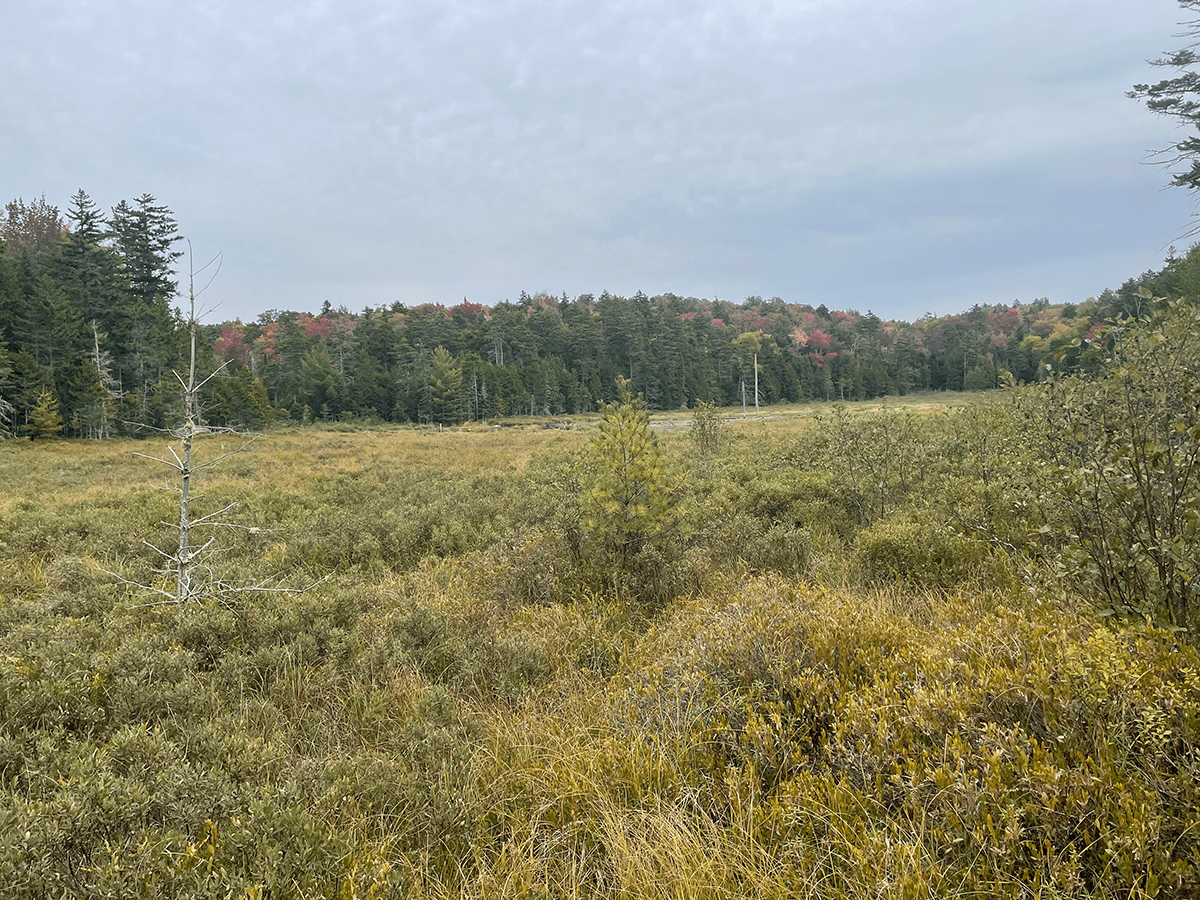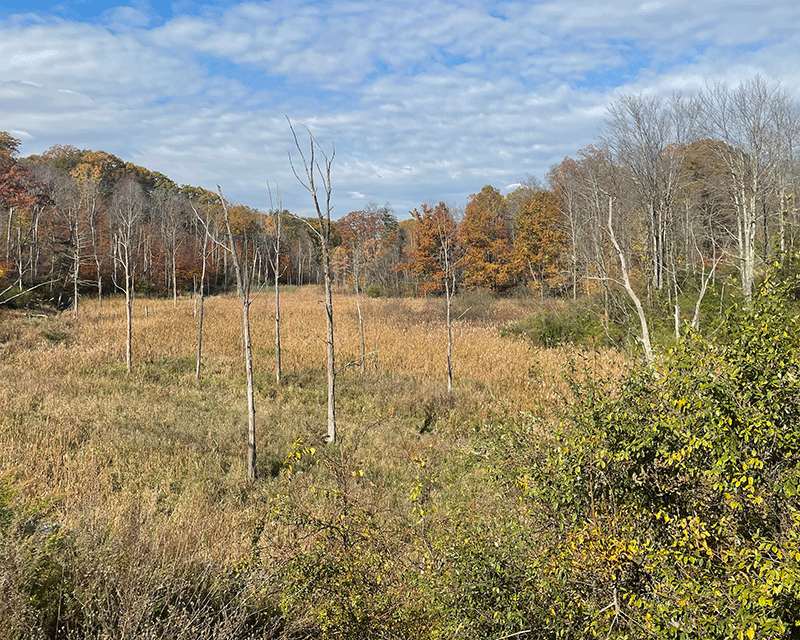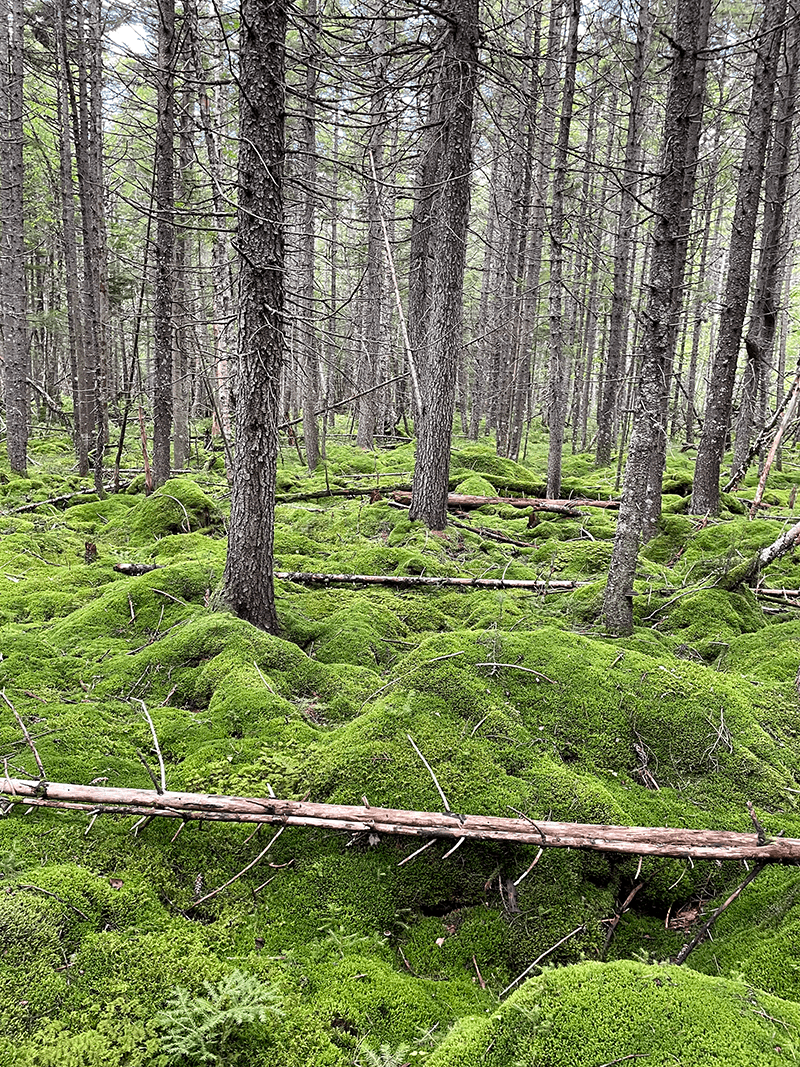Submit your comment today to the Department of Environmental Conservation on its draft wetlands regulations. Comments are due by September 19, 2024.
The Department of Environmental Conservation (DEC) is seeking public comments on the proposed regulations that it released in July 2024. These proposed regulatory changes are a result of the 2022 amendments to the Environmental Conservation Law (ECL Article 24) that expanded protections for wetlands provided by the Freshwater Wetlands Act (FWA). Protect the Adirondacks supports the draft regulations and urges DEC to go even further to provide stronger protections to wetlands across the State. Wetlands are essential for protecting groundwater and surface water quality, providing habitat for numerous fish and wildlife species and providing flood protection and they should be protected to the greatest extent possible from being developed or degraded.
Details on the Proposed Wetlands Regulations
Pursuant to the amended Wetlands Act and the new regulations, beginning on January 1, 2028 freshwater wetlands will be protected if they are at least 7.4 acres (the current threshold is 12.4 acres), and beginning on January 1, 2025 smaller wetlands (regardless of acreage) will be protected if they “are of unusual importance.” The term “unusual importance” includes wetlands that have “functions and values that are of local or regional significance because . . .the wetland is partially located within the Adirondack Park and under the jurisdiction of the Adirondack Park Agency.” Among other things, this provision ensures that wetlands that cross the boundary of the Adirondack Park will be protected both inside and outside of the Park.
The proposed regulations clarify that the Adirondack Park Agency “shall identify and classify the wetlands within the Adirondack Park.” This is consistent with current implementation of the FWA by the Adirondack Park Agency for wetlands within the boundaries of the Adirondack Park.
The proposed regulations also provide new protections for a unique type of wetland known as vernal pools, which serve as habitat for numerous plants and animals and are essential breeding grounds for many species, such as turtles, frogs, salamanders, invertebrates, and reptiles.
Public Hearings on September 10th and September 12th
DEC will hold two public comment hearings virtually on September 10, 2024, at 1:00 p.m. and 6:00 p.m. and an in-person hearing on September 12, 2024, at 1:00 p.m. at the DEC headquarters at 625 Broadway, Albany, New York.
Click here for more information about DEC’s proposed regulations and the public hearings.
Support DEC’s draft Regulations and Urge Stronger Protection for Wetlands
Protect the Adirondacks supports DEC’s effort to promulgate the new wetlands regulations prior to the effective date of the FWA amendments. However, the regulations should be strengthened to better reflect the purpose and intent of the FWA amendments passed in 2022. The following suggestions would improve the DEC’s current proposal:
- DEC’s regulations should state that the statute creates a “rebuttable presumption that mapped and unmapped areas meeting the definition of freshwater wetland” are protected and subject to DEC’s permit requirements.
- If a proposed project has wetlands on site and it has not received written site plan approval by January 1, 2025, and has not been undertaken, then the applicability of the wetlands regulations should not be curtailed by the prior issuance of a determination pursuant to the State Environmental Quality Review Act (SEQRA). A lead agency has the ability to reexamine its SEQRA determination, so the issuance of a Final Environmental Impact Statement or a negative declaration should not be reasons to defer applicability of the new wetlands regulations that go into effect on January 1, 2025.
- The “Local or Regional Significance” category of wetlands includes those wetlands within an area designated as a Critical Environmental Area (CEA). However, in order to qualify for wetlands protection, DEC’s draft regulations require that the CEA must have had “specific reference to wetland protection” in the “written justification supporting the designation” of the CEA. The caveat requiring “specific reference to wetland protection” is unnecessarily restrictive. Any wetland located within a CEA should be protected regardless of the specific “written justification” that was given for designation of the CEA.
- The draft regulations identify jurisdictional vernal pools by using egg mass counts for specific amphibians according to geographic region. This approach is unnecessarily restrictive and may not reflect a vernal pool’s true value. DEC’s regulations should be expanded to allow greater flexibility in determining jurisdictional vernal pools based upon any species (amphibian, invertebrate, reptile) that rely on vernal pools for breeding.
- The regulated adjacent area around vernal pools should be extended from 800 feet to 1,250 feet to better protect and preserve this critically important category of wetlands.
- Wetlands that are partially located within the Adirondack Park are properly identified as protected wetlands that have “Local or Regional Significance.”
- The flooding characteristic for wetlands of “unusual importance” should be expanded to include watersheds that are already known to experience flooding, and include additional criteria to capture more wetlands that protect New York communities from adverse flooding events.
- DEC’s regulations state that “if weather or ground conditions prevent the department from making a jurisdictional determination within 90 days, it may extend such period until a determination can be made.” That language should be clarified to make it clear that when on-the-ground conditions are not conducive to breeding (e.g., too cold, too dry, or outside of the breeding season), such that a vernal pool cannot be identified as productive for breeding, then DEC’s time to make jurisdictional determination shall be extended until the productivity of the vernal pool can be determined. Otherwise, the statutory protection afforded to vernal pools will be completely lost if applicants can simply request a jurisdictional determination at any time that is 90 days prior to the breeding season.
Submit Your Public Comment Today
Public comments are due by the close of business on Thursday, September 19, 2024. Please write your own comment letter to the DEC or you can use the form below to send an automatic comment.
Scroll the end of this article to send an automatic email.
Comments on the proposed regulations must be submitted in writing and can be mailed or emailed to WetlandRegulatoryComments@dec.ny.gov with the subject line “Wetlands Part 664 Comments” or mailed to the following address:
NYSDEC
Attn: Roy Jacobson, Jr., 5th Floor
625 Broadway
Albany NY 12233-4756
Points for Public Comments to DEC on the proposed wetlands regulations:
I support DEC’s effort to promulgate new wetlands regulations prior to the effective date of the FWA amendments. However, the regulations should be strengthened in the following ways:
- DEC’s regulations should state that the statute creates a “rebuttable presumption that mapped and unmapped areas meeting the definition of freshwater wetland” are protected and subject to DEC’s permit requirements.
- There should be no exemptions from the effective date of January 1, 2025 for projects that have not been permitted, approved, or constructed as of that date.
- Any wetland located within a Critical Environmental Area (CEA) should be protected regardless of the specific “written justification” that was given for designation of the CEA.
- DEC’s regulations should be expanded to allow greater flexibility in determining jurisdictional vernal pools based upon any species (amphibian, invertebrate, reptile) that rely on vernal pools for breeding.
- The regulated adjacent area around vernal pools should be extended 1,250 feet to better protect and preserve this critically important category of wetlands.
- The flooding characteristic for wetlands of “unusual importance” should be expanded to include watersheds that are already known to experience flooding, and include additional criteria to capture more wetlands that protect New York communities from adverse flooding events.
- DEC’s regulations should be clarified to make it clear that when on-the-ground conditions are not conducive to breeding (e.g., too cold, too dry, or outside of the breeding season), such that a vernal pool cannot be identified as productive for breeding, then DEC’s time to make jurisdictional determination shall be extended until the productivity of the vernal pool can be determined.
Submit an Automatic Email Public Comment
This public comment has closed.








